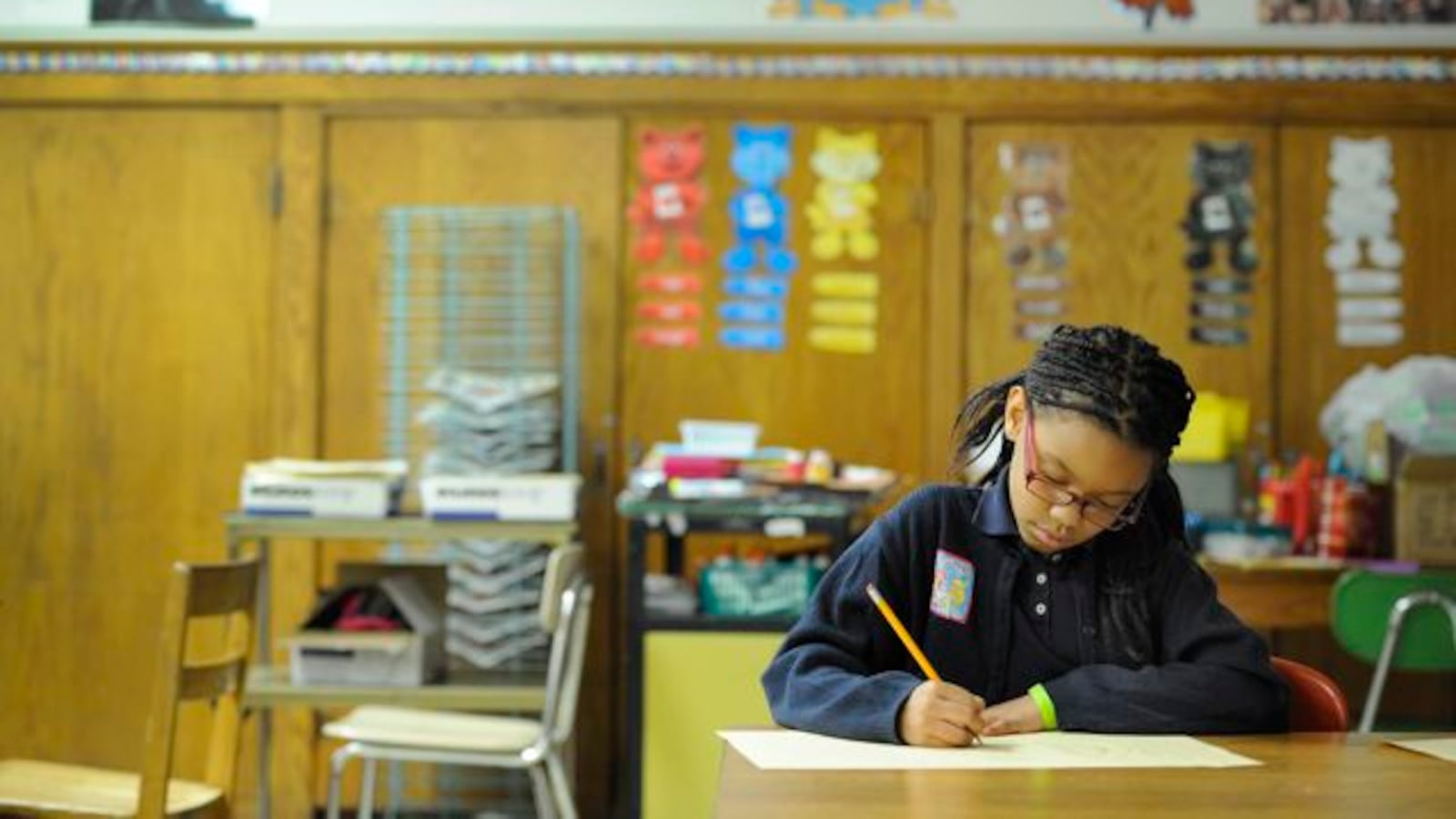New Hampshire’s going to do it, so why can’t Indiana just have all high school juniors take the SAT instead of a state exam?
Well, it turns out the Hoosier state can probably do it, too, if state leaders decide they want to.
That’s what Aaron Lemon-Strauss of the College Board told a legislative study committee today. The College Board makes both the SAT and high school Advanced Placement tests students can take to earn college credit.
New Hampshire already has permission from the U.S. Department of Education to use the SAT as its 11th-grade state test, Lemon-Strauss said, and he believes the SAT also could accurately measure Indiana’s new academic standards. The College Board is working on a full report to evaluate that question.
“(It) might have the best of both worlds, where students are being tested on something they are learning every day at school,” he said. “Then that test goes on to power their future aspirations as they move on to college and careers.”
The chairman of the education committee in the Indiana House, Rep. Robert Behning, R-Indianapolis, said he’s not sure that’s the right move for Indiana, but he was intrigued. Students should have more “skin in the game” when it comes to state tests, he said.
“There’s no high-stakes nature for the student, it’s basically for the adults,” Behning said of Indiana’s high school tests today. “If there were more in place for what would happen to the student if they were successful, you might have more proficiency.”
Indiana has a contract with the British-based testing company Pearson to make ISTEP this school year and next school year. Making changes to its testing plan would require a new agreement with the U.S. Department of Education. Federal officials have given the state relief from sanctions of the federal No Child Left Behind law in return for upping its standards and pairing them with a more challenging state test.
The legislative study committee was the outcome of a compromise last spring that cleared the way for the new ISTEP test created by Pearson.
The chairman of finance committee in the Indiana Senate, Sen. Luke Kenley, R-Noblesville, pushed for the state to adopt a national “off-the-shelf” test in place of ISTEP, which he argued would be cheaper and could do the job just as well. The final deal with Pearson costs about $37 million per year, up from about $25 million a year in the prior deal with CTB.
After hours of discussion today, there was no clear consensus about whether ISTEP should stay as-is or be tossed aside for a new exam in two years.
Indiana approved new academic standards last year, touted as more rigorous. Then Indiana Department of Education officials set about revamping ISTEP to match the new standards.
Michael Cohen, president of the nonprofit Achieve that helps states work on academic standards and tests, urged lawmakers to make sure the passing rates on ISTEP truly separate the kids who are prepared to be successful after high school and can demonstrate skills and content knowledge from those who can’t.
In 2013, the state’s ISTEP test didn’t do that well, he said.
“The point I’m making here isn’t that Indiana students are underperforming compared to other states, although you are,” Cohen said. “But that you are telling kids they’re proficient when … they’re not.”
Cohen referred to a report from Achieve that showed Indiana’s judgement of which students were proficient, based on ISTEP, differed greatly from the results of the National Assessment of Educational Progress, a national exam given to a sampling of students across the country.
NAEP results from 2013 showed an almost 40 percentage point difference in the share of Indiana students ISTEP indicated were proficient and the percent who scored proficient on the national test — 86 percent passed ISTEP while just 38 percent from the Hoosier state passed NAEP.
It’s possible the new ISTEP test will do better, he said.
“I wouldn’t worry about the old one because that’s the old one,” Cohen said. “Focus on results for this past year. If there’s still a big gap (between ISTEP and NAEP), I’d look into it.”

